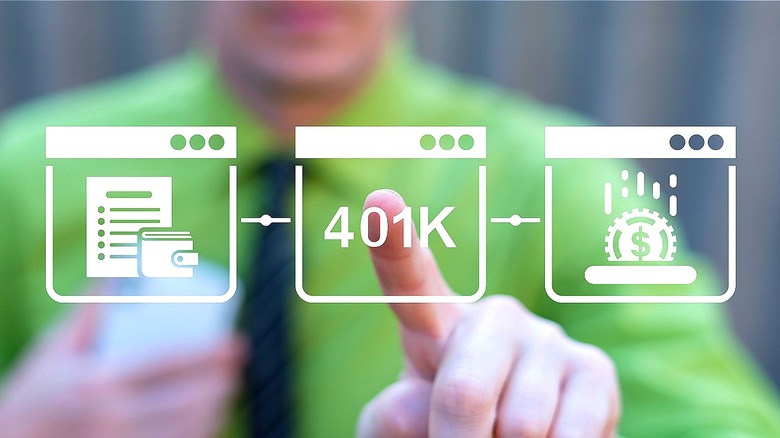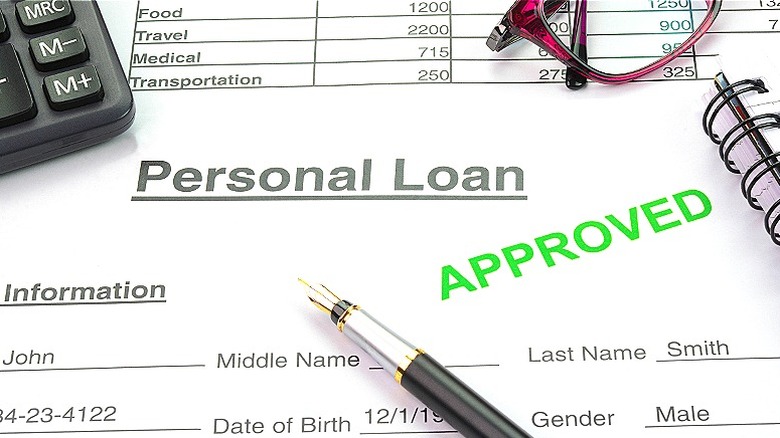3 Reasons To Break The Rules And And Take Out A 401(k) Loan
401(k) retirement plans are a versatile asset that many employees are able to pay into, saving toward their future retirement with great effect. Many companies offer 401(k) matching options, enhancing your ability to save toward your goals with even greater speed. A 401(k) is a great addition to the varied tools that savers have available, and they can even provide extra functionality and assistance in the event that things get tight in the short term.
It's important to note that no one contributes to their retirement accounts expecting to access these funds before reaching retirement age. A 401(k), Roth IRA, or any other type of retirement savings plan is a lousy way to set money aside that will be used intentionally in any financial circumstance other than retirement. With that being said, there are times when withdrawals used to fund immediate needs can make sense.
In 2023, Tim Walz withdrew cash from his retirement accounts to pay off his daughter's college expenses. He's in his 60s, so the choice to tap into these funds came without penalty or added red tape, but for a younger saver, the same withdrawal strategy likely would. With a 401(k) you don't necessarily have to take a distribution to access your saved funds, however. A 401(k) loan provides a means of utilizing retirement assets today, but it's not the best option for most people. Even so, there are some situations in which this funding avenue makes the most sense, providing a valuable and penalty-free option to navigate a financial bind. Here's when to use a 401(k) loan.
1. To eliminate high-interest credit card debt
Interest adjustments on loans distributed from your 401(k) account can vary, but you're almost certainly going to pay less in interest than the negative value assessed on a high-interest credit card. The IRS sets out rules for this tool's use, essentially decreeing that once repaid, your 401(k) account should exist in a state that resembles what it would hold if the loan wasn't used (so interest is likely to follow the basic curvature of growth within your portfolio — perhaps 6% to 9%, but all plans will be different). It's important to keep in mind that interest is paid to your own 401(k) account, however, not a third-party lender. So you're actually borrowing money from yourself and then paying it back, potentially creating even greater future financial stability in the process.
Taking a 401(k) loan to pay off a credit card that has run somewhat out of control can be a valuable option. The average for all new card offers is 24.61% (as of this writing). If your card features an APR even close to this figure, you're potentially creating huge volumes of additional debt with each month you aren't able to clear the balance. Borrowing from your 401(k) won't incur penalties or other financial red tape as long as you pay it back within five years — with contributions taken directly from your paycheck in some cases. This allows you to pay yourself interest instead, and at a much lower rate. Paying off a card can also boost your credit score and open up new financial opportunities for the future.
2. To fund a specific, one-time financial need
You might consider a hardship distribution from your IRA account when things begin to fall apart financially. Perhaps, for example, you're facing a foreclosure and need a capital infusion to keep your home. Instead of withdrawing funds (the traditional way), though, and taking a penalty for using your retirement assets early (although the IRS notes some exceptions that can reduce penalties), a 401(k) loan is a much better option when available.
Rather than pulling money from your assets, a 401(k) loan allows you to tap into the value, and then repay it. By taking a withdrawal from your retirement accounts, you take that value away, capped by deposit limits. Even with an aggressive investment strategy, you're unlikely to make an account completely whole because of these yearly contribution caps. With your 401(k) account, taking a loan allows you to return the funds, although some plans won't allow for standard contributions during the repayment period. (Read about what happens if you contribute too much to your Roth IRA.)
If you're facing a one-time funding shortfall on something that's truly important (splurge purchases like a new luxury car or Christmas presents for the family don't count), utilizing a loan from your own funding won't set you back financially by forcing you to pay interest to someone else. You'll keep the value yourself, shifting part of its buying power forward into the present. However, those who do use a 401(k) loan should take care not to fall into a cycle of borrowing and repayment. Multiple loans might be possible under your plan, but it can become a vicious cycle in which your retirement funds see stifled growth as you continue to draw down funding for present day expenses.
3. As an alternative to a standard personal loan
In some instances, a standard loan might be warranted for a large expense at home. Although splurging on a new car isn't a good idea (and it rarely is), a set of wheels is a crucial asset that many Americans rely on for everyday mobility, including their commute to work. In such a case, you might consider taking a 401(k) loan instead of financing your car purchase in order to pay yourself back rather than a lender who might otherwise make a tidy profit off your loan agreement. Home improvement projects or repair work, and plenty of other typical financial decisions that tend to have financing considerations associated with them, might be better served by using a 401(k) loan instead.
It's essential to note that every circumstance will be different, though. No two borrowing events will be the same, and your 401(k) funding may allow you to cover the cost, or not. For accounts with more than $10,000 invested, you can borrow up to 50% of the account's value. This might be enough to fund your need, but multiple financing sources might instead be necessary, complicating the picture and potentially creating too great a repayment burden for your cash flow to handle.



